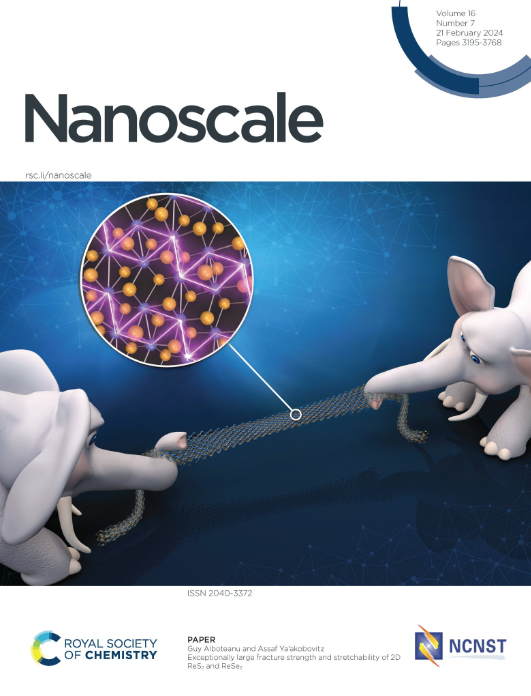功能化微氧化石墨烯调制真黑素超结构的振动和纳米成像
IF 5.1
3区 材料科学
Q1 CHEMISTRY, MULTIDISCIPLINARY
引用次数: 0
摘要
具有合理协同结构的天然有机/无机材料由于其杂化自组装特性而长期受到极大的关注。天然生物分子由于其固有的生物功能和高生物相容性,被期望产生具有吸引力的能够感知其环境的上层结构。然而,理解它们与无机材料的组装策略往往是一个重大挑战。在此,我们研究了微氧化石墨烯化学功能化对天然真黑素超结构的生物活性组装,通过分析它们的振动-结构相关性来研究它们的强结构亲和力。高分辨率电子纳米成像与自愈振动拉曼光谱互补实验的应用揭示了这种复杂杂化材料有趣而独特的特性。特别是,高分辨率纳米衍射/成像分析证明了纯天然真黑素的新纳米晶畴具有不同和不规则的取向,形成不规则的纳米片。有趣的是,真黑色素单元的分解和重组路线实际上不仅在氧化石墨烯表面上很明显,而且在垂直氧化石墨烯的边缘也有大量分布,具体由主要共振带(D, D**和G)的分析变化所支持。这证实了在室温水溶液中氧化石墨烯的外部刺激下,真黑素在球形和细长纳米结构中重组的能力。因此,这项工作强调了通过环境修饰来控制生物活性分子的设计策略的组装机制。本文章由计算机程序翻译,如有差异,请以英文原文为准。
Vibrational and Nanoimaging of Eumelanin Superstructures modulated by Functionalized Micronized Graphene Oxide
Natural organic/inorganic materials with rational cooperative formations have long been of enormous interest owing to their hybrid self-assembling properties. Natural biomolecules are expected to produce attractive superstructures capable of sensing their environment, following its inherent biological functions and high biocompatibility. However, understanding their assembly strategies with inorganic material often poses a major challenge. Herein, we investigated the bioactive assembling of natural eumelanin superstructures modulated by chemical functionalization of the micronized graphene oxide to research their strong structural affinity by analysing their vibrational-structural correlations. The application of complementary experiments of high-resolution electron nanoimaging coupled with self-healing vibrational Raman spectroscopy revealed intriguing and unique features of this complex hybrid material. In particular, high resolution nanodiffraction/imaging analysis evidence new nanocrystalline domains of pure natural eumelanin with different and irregular orientations forming irregular nanosheets. Interestingly, a disassembly and reassembly route of eumelanin units are actually evident not only on the oxide graphene surface but also located in high amounts on the edge of vertical graphene oxide, concretely supported by the analytical changes of the predominant resonance bands (D, D**, and G). This confirms the ability of eumelanin to reassemble in spherical and elongated nanostructures induced by the external stimuli of the graphene oxide in aqueous solution at room temperature. This work thus highlights the assembling mechanisms for designing strategy to control bioactive molecules through environment modification.
求助全文
通过发布文献求助,成功后即可免费获取论文全文。
去求助
来源期刊

Nanoscale
CHEMISTRY, MULTIDISCIPLINARY-NANOSCIENCE & NANOTECHNOLOGY
CiteScore
12.10
自引率
3.00%
发文量
1628
审稿时长
1.6 months
期刊介绍:
Nanoscale is a high-impact international journal, publishing high-quality research across nanoscience and nanotechnology. Nanoscale publishes a full mix of research articles on experimental and theoretical work, including reviews, communications, and full papers.Highly interdisciplinary, this journal appeals to scientists, researchers and professionals interested in nanoscience and nanotechnology, quantum materials and quantum technology, including the areas of physics, chemistry, biology, medicine, materials, energy/environment, information technology, detection science, healthcare and drug discovery, and electronics.
 求助内容:
求助内容: 应助结果提醒方式:
应助结果提醒方式:


